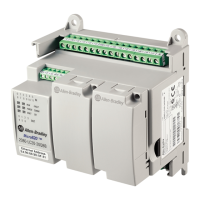
Do you have a question about the Rockwell Automation Allen-Bradley Micro820 and is the answer not in the manual?
| Brand | Rockwell Automation |
|---|---|
| Model | Allen-Bradley Micro820 |
| Category | Controller |
| Language | English |
Provides an overview of the manual's purpose and scope for users of Micro800 controllers.
Provides links and instructions for downloading necessary firmware and software files from Rockwell Automation.
Highlights new or updated information included in this publication, focusing on substantive updates.
Describes the physical characteristics and capabilities of Micro830, Micro850, and Micro870 controllers.
Details the hardware features and indicators for Micro830 controllers, including 10/16 and 24-point models.
Details the hardware features and indicators for Micro850 controllers, including 24 and 48-point models.
Details the hardware features and indicators for Micro870 controllers, including 24-point models.
Details the 10/100 Base-T Ethernet port on Micro850/Micro870 controllers and its LED indicators.
Introduces Connected Components Workbench software for controller programming and device configuration.
Explains how to make logic and address configuration changes while the controller is in run mode.
Covers critical safety practices for system installation, including power disconnection and safety circuits.
Describes the function and importance of a hard-wired master control relay for emergency machine shutdown.
Provides detailed physical dimensions for mounting Micro830, Micro850, and Micro870 controllers.
Explains the procedure for mounting controllers on a standard DIN rail using the module's latch.
Details the process for panel mounting controllers using mounting screws and hole spacing.
Outlines essential guidelines for proper controller wiring and recommendations for noise reduction.
Explains the necessity and benefits of using surge suppression for controller output contacts to prevent damage.
Provides instructions for grounding the controller to ensure safety and proper operation, referring to industrial guidelines.
Covers general information about controller input/output wiring and minimizing electrical noise.
Lists and briefly describes the communication protocols supported by Micro830, Micro850, and Micro870 controllers.
Explains the use of dial-up, leased-line, and radio modems for Micro800 controller communication via serial ports.
Guides users on configuring the serial port as CIP Serial, Modbus RTU, or ASCII, including advanced parameters.
Provides instructions for configuring the controller's Ethernet port settings, including IP addresses, subnet masks, and gateways.
Details how to configure the serial and Ethernet ports for DNP3 Slave communication on Micro870 controllers.
Explains how to enable DNP3 over IP protocol by selecting DNP3 over IP Enable in the Ethernet configuration.
Covers application layer configuration for DNP3 Slave, including driver, node address, baud rate, and parity.
Explains DNP3 objects and how they map to controller variables, including data types and configuration.
Covers how to generate DNP3 events from data objects and report them via polled or unsolicited responses.
Details how to view diagnostic counters and errors for various communication channels in DNP3 Slave.
Provides a general overview of how programs run and execute on a Micro800 controller, including scan cycles and POU execution.
Explains the controller's behavior when plug-in or expansion I/O modules are missing and optional module configuration.
Discusses how various activities like interrupts and communication impact controller load and program scan cycle time.
Details how variables retain their values after a power cycle across different Micro800 models, including user-created variables.
Offers programming advice and outlines limitations for advanced users when working with Micro800 controllers.
Explains the use of Pulse Train Outputs (PTO) for motion control and generating pulses for servo drives.
Introduces the fundamental elements and components of the Micro800 motion control feature, including axes and function blocks.
Describes the signals required for each motion axis, including fixed PTO signals and configurable I/O.
Introduces the High-Speed Counter (HSC) feature, its hardware and software components.
Explains how to configure the High-Speed Counter to operate as a Programmable Limit Switch (PLS).
Defines the purpose and function of the High-Speed Counter in detecting pulses and initiating control operations.
Details the input mapping for high-speed counters across different Micro8xx controller models.
Provides information on configuring and using HSC interrupts to execute user logic on specific events.
Explains how to configure the High-Speed Counter to operate as a PLS using preset and output data.
Explains how controller operations are restricted based on the operating mode for secure operation.
Describes how only one software session gets exclusive access to the controller for configuration.
Details how to set a password to restrict access to programming software connections.
Provides workflows for uploading from and debugging password-protected controllers.
Guides users on downloading a project to a controller that is secured with a password.
Explains how to set, change, and clear controller passwords for security and exclusive access.
Provides a brief overview of microSD card support on Micro830, Micro850, and Micro870 controllers.
Explains how to back up and restore projects using the microSD card via software or file.
Describes how to configure controller settings using the ConfigMeFirst.txt file on the microSD card for power-up operations.
Covers the feature for capturing global and local variables with timestamps into the microSD card for data logging.
Explains how to store and load lists of data to and from recipe files using the RCP instruction and microSD card.
Provides information on Modbus RTU and TCP protocols, including mapping and supported data types for Micro800 controllers.
Explains the big-endian byte ordering used by Modbus and how Micro800 controllers handle it.
Details how symbolic variable names are mapped to physical Modbus addresses and supported data types.
Guides users on updating controller firmware using Connected Components Workbench software via USB or microSD card.
Provides steps to establish communication between RSLinx Classic and Micro8xx controllers using a USB connection.
Explains how to set, change, and clear controller passwords for security and exclusive access.
Guides users on creating an HSC project, assigning variables, and using HSC function blocks for counting and PLS applications.
Explains how to logically force I/O variables and understand the behavior of forcing inputs and outputs.
Details how to make logic modifications to a running project and test them on the controller without disconnecting.
Explains fundamental properties of user interrupts, including what they are and how they function within the controller.
Describes instructions like STIS, UID, UIE, UIF, and UIC for managing user interrupts.
Covers the configuration and status management of the Selectable Timed Interrupt (STI) function for time-sensitive logic.
Explains how to configure and monitor Event Input Interrupts (EII) and their status for detecting field device events.
Provides a guide to understanding the status LEDs on Micro830, Micro850, and Micro870 controllers for diagnostics.
Lists common error codes, their descriptions, and recommended actions for recovery.
Explains the two basic types of faults: recoverable and non-recoverable, and how to identify them.
Provides steps for resolving recoverable and non-recoverable faults, including logging and software actions.
Guides users on how to retrieve a fault log from the controller using Connected Components Workbench software.
Introduces the IPIDCONTROLLER function block, comparing it to standard PID and highlighting auto-tune capabilities.
Details the arguments and parameters used within the PID function block for process control.
Guides users through the process of performing auto-tuning for PID controllers by verifying system constancy and setting parameters.
Provides a formula and examples for calculating the total power requirements of the controller system, including main unit, plug-ins, and expansion I/O.
Explains the DF1 Full-Duplex protocol for point-to-point connections and its support for data transparency.
Details the DF1 Half-Duplex protocol for multi-drop networks and its operation, including controller capabilities.
Guides users on configuring parameters for DF1 Half-Duplex communication, including RTS/CTS and delay settings.
Explains how to set up a master station for general point-to-multipoint configurations using standard communication.
Provides steps to configure the controller as a slave station for DF1 communication, including baud rate, parity, and node address.
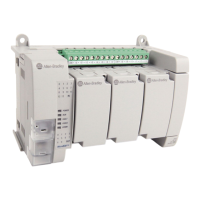
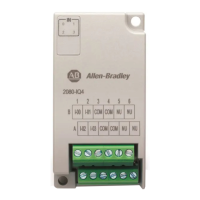

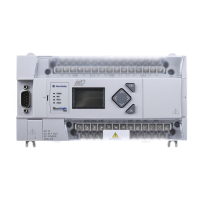
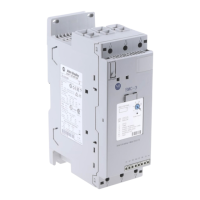
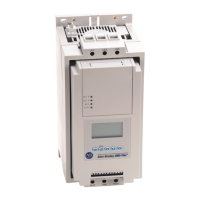


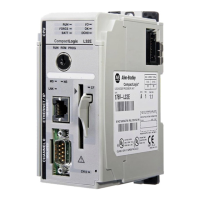

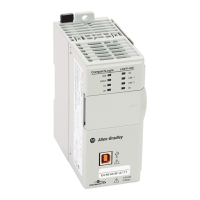

